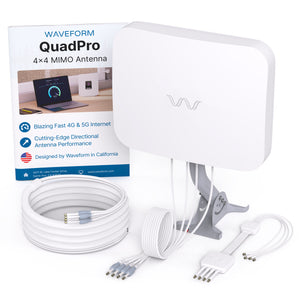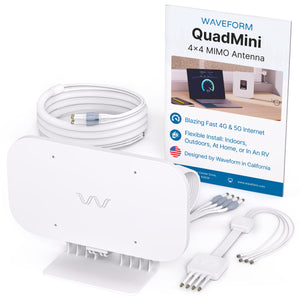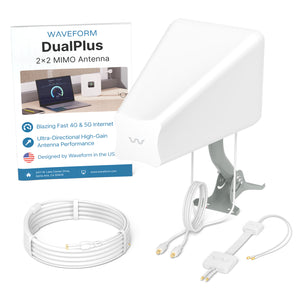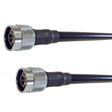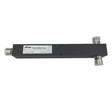Across Indiana, reliable wireless connectivity is now a critical utility. From the steel mills clustered around Gary to the massive distribution corridors that follow I-65 and I-70, facilities are growing larger and more data-hungry. Thick concrete, high-bay racking, and sprawling outdoor yards all conspire to weaken WiFi, while public cellular networks can bog down under heavy traffic. A private 5G network solves those problems by giving you dedicated bandwidth, higher transmit power, and a direct tie-in to your existing IT infrastructure.
Why Indiana Facilities Are Turning To Private 5G
Indiana's economy is heavily industrial. The state ranks among the nation's leaders for manufacturing employment, supports a fast-growing e-commerce logistics sector, and houses major research universities whose campuses span hundreds of acres. All of these environments share common pain points that private 5G answers:
-
Manufacturing plants in Fort Wayne, Kokomo, and the Calumet Region rely on autonomous guided vehicles, machine-vision cameras, and rugged tablets. These devices demand low latency and consistent throughput that WiFi often fails to deliver through metal walls and moving equipment.
-
Distribution centers around Plainfield and Jeffersonville operate twenty-four hours a day and cannot tolerate blind spots when scanning inventory. CBRS-based private 5G covers indoor aisles and outdoor trailer yards with a single network.
-
Healthcare and higher-education campuses in Bloomington, West Lafayette, and South Bend need secure wireless that isolates sensitive data from guest traffic. A private cellular core keeps patient and research information on a segmented, encrypted path.
-
Agriculture and energy sites scattered across rural counties face the twin challenges of distance and harsh weather. Private 5G radio units can cover square miles, ride through thunderstorms, and backhaul to fiber or microwave where wired service is unavailable.
For readers who manage facilities inside the capital city, we maintain a separate page on Private 5G network integration in Indianapolis that dives into the specific downtown and metro requirements.
Indiana is also no stranger to extreme seasonal swings, from lake-effect snow in the north to tornado-level winds in the south. Outdoor WiFi access points, typically limited to 30 dBm of power, struggle in those conditions. CBRS small cells can legally transmit at higher power, punch through precipitation, and run from hardened enclosures rated for sub-zero temperatures.
Private 5G Versus WiFi And Public Cellular
Private 5G networks in the United States typically operate in the Citizens Broadband Radio Service (CBRS) band at 3.5 GHz. The spectrum is lightly licensed, so you do not compete with neighbors as you would on 2.4 GHz or 5 GHz WiFi. Compared with commercial 5G from AT&T, Verizon, or T-Mobile, a private network gives you:
- Guaranteed Quality of Service. You allocate bandwidth and latency budgets per device or application.
- Local breakout. User traffic stays on-site, which reduces latency and simplifies integration with existing VLANs and security appliances.
- Predictable costs. You buy spectrum access in bulk and pay nothing per SIM after deployment.
- Higher transmit power and larger cell size. One outdoor radio can cover up to 1.5 miles in open terrain, far exceeding WiFi coverage.
Meanwhile, WiFi 6E and emerging WiFi 7 will remain indispensable for laptops and casual connectivity. Private 5G does not replace WiFi, it complements it, offloading mission-critical or wide-area links while reducing congestion on your WLAN. You can read more about how the two technologies coexist in our detailed Private Networks Guide.
Our End-To-End Deployment Process
Waveform handles everything from the first predictive model to ongoing performance monitoring.
-
Rapid Site Snapshot
Send us a floor plan, an outline of outdoor areas, and a list of devices. Within three to five business days we return a draft RF design, coverage heat map, and budgetary range.
-
Detailed Design And Proposal
If the project looks viable, we perform on-site signal readings, refine the network architecture using professional propagation software, and produce a fixed-price proposal that includes a bill of materials, cabling plan, and construction timeline.
-
Turnkey Build
Our field crews install radios, edge compute nodes, PoE or AC power, and fiber or copper backhaul. Day-one acceptance testing verifies coverage and throughput across all intended zones.
-
Device Procurement And Staging
Because we are vendor-agnostic, we source handhelds, scanners, routers, or cameras from partners such as Peplink, Cradlepoint, Zebra, Honeywell, and others. Each unit ships pre-provisioned and ready to attach to the network.
-
Managed Support
We provide a single SLA that covers the private core, the radio access network, and the user equipment. Remote monitoring flags anomalies before they disrupt operations and our technicians are available 24 x 7 for remediation.
For smaller or temporary deployments, our "network in a box" can roll out in under a week. It arrives on-site with preconfigured radios, a portable core, and SIMs so you can light up coverage the same day.
Proven Experience In The Midwest
We know the wireless demands of heavy industry because we have delivered solutions for it. Just across the Illinois border, Waveform completed a wireless deployment for Scotsman Ice Systems, a leading manufacturer of commercial ice machines. The project involved boosting on-site connectivity in a busy production environment filled with metal structures and high-speed machinery, challenges very similar to those inside many Indiana factories. Lessons learned there directly inform how we tune RF parameters and QoS profiles for clients throughout the region.
What Does Private 5G Cost In Indiana?
Pricing depends on square footage, ceiling height, and the ratio of indoor to outdoor coverage, but most indoor projects land between $1 and $2.50 per square foot turnkey, including design, installation, SIMs, and the first year of support. Outdoor deployments often achieve even better economics. In flat, open areas common in central Indiana, a single macro-style CBRS radio can blanket roughly a 1.5-mile radius. We have scoped full outdoor systems, including the private core, for about $100,000 when existing fiber is available at the tower site.
Because Waveform is vendor-neutral, we select radios, core software, and devices that meet your technical requirements and budget constraints, not someone else's quota. We put every component in writing before work begins, so you can forecast total cost of ownership with confidence.
Ready To Start?
Waveform is a connectivity integrator that designs and delivers turnkey private 5G networks across Indiana. Call us at (800) 637-4049 or get a custom private 5g design and quote today to see how a dedicated cellular network can eliminate dead zones, cut operating costs, and future-proof your facility.























